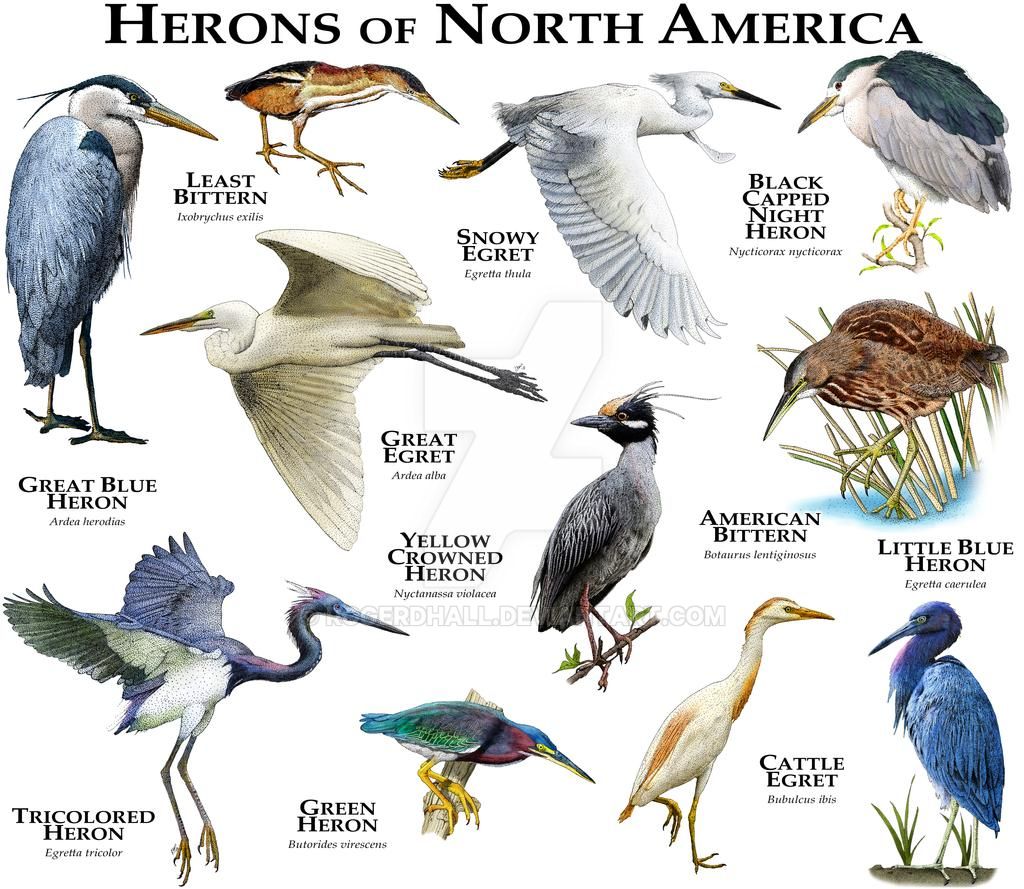By BA Nester

Most species in this family of Herons, Bitterns and Egrets have long necks; short tails; long, pointed bills; and long legs. They eat fish, amphibians, crustaceans, and other aquatic animals. Herons, egrets and bitterns are found worldwide. There are around 65 species of birds in this family.
North American Species:
Great Blue Heron
Green Heron
Little Blue Heron
Tricolored Heron
Yellow-crowned Night-heron
Black-crowned Night-heron
American Bittern
Least Bittern
Cattle Egret
Great Egret
Snowy Egret
Reddish Egret
All are classified as of LEAST CONCERN in the World and US Status Key in regards to being endangered.
The birds in this family live in inland and coastal wetlands. To find them, take your binoculars and scan the edges of the marshes, ponds, river banks and shorelines. They are stately and slow-moving as they search for their prey, but when it’s time to strike, they hit with lighnting speed!
These wading birds are unlikely to come to your backyard to feed … UNLESS you have a pond, and then they are UNWANTED visitors as they dine on your stocked fishes. Some species also dine in open fields, farmlands and meadows.
You may have spotted rookeries as you drive the highways past marshes and open waterways. They are noisy places during breeding, egg-laying and hatching seasons. Look for “colonies” of nests. They are big piles of sticks. The majority of the herons and egrets follow the same colony and stick-nests concept with the Yellow-crowned, Am Bittern, Least Bittern and Cattle Egret building their nests among the reeds and cattails or low in the bushes.
Whether you live in the North, South, East or West of the United States, you will have some species of these wading birds in your area. It is a delight to see them fly, land and hunt for their next meal using their stealthy, well-practised slow-walk, then striking with astonishing speed! Keep your eyes open and your binocs trained on the edges of the water! You will be delighted with what you see! Herons, bitterns and egrets, oh my!

Sharpen your ID-ing skills with Sibley’s Backyard Birding Flashcards! What fun!!!
PART II – The Herons
PART III – Bitterns and Egrets